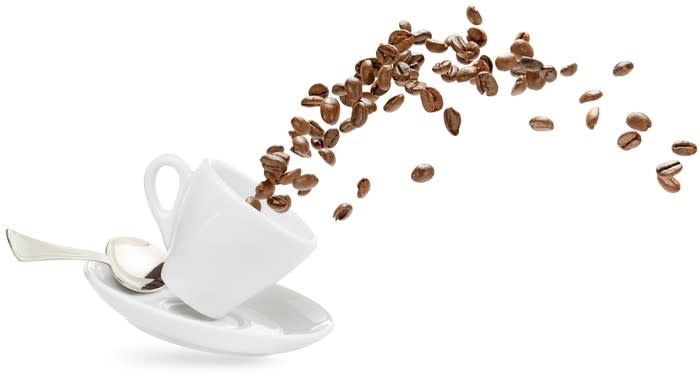Luckin Coffee's Losses Look Dangerously Unsustainable
Luckin Coffee's (NASDAQ: LK) stock price plunged this week after the Chinese coffee chain posted its second-quarter earnings report. Its revenue rose 648% annually (90% sequentially) to 909 million renminbi (RMB) ($132 million), but still missed estimates by nearly $1 million.
On the bottom line, Luckin posted an adjusted net loss of 611 million RMB ($89 million), compared to a loss of 333 million RMB a year ago and 552 million RMB in the first quarter. Its net loss of $0.48 per American depositary share (ADS) also missed expectations by three cents.
When Luckin went public in May, I warned that its ambitious expansion plans, which aim to overtake Starbucks (NASDAQ: SBUX) as China's top coffee chain, were dangerously unsustainable. Luckin's second-quarter report reinforces that thesis, and I believe that this coffee chain is headed straight off a cliff.

Image source: Getty Images.
Luckin's business model lacks rhyme or reason
Luckin Coffee sells drinks at lower prices than Starbucks, attracts customers with big promotions and discounts, and locks them in with loyalty programs and delivery services on its app.
Unlike Starbucks, which rarely launches localized ad campaigns, Luckin launches splashy marketing campaigns starring Chinese celebrities. That's why its sales and marketing expenses surged 119% annually to 390 million RMB ($57 million) during the second quarter.
Meanwhile, Luckin keeps selling its drinks at a loss as it expands its fleet of stores, which grew 375% annually to 2,963 locations. That puts it in striking range of Starbucks, which finished last quarter with 3,922 locations across China. It plans to eclipse Starbucks with 4,500 stores by the end of the year.
Luckin's obsession with topping Starbucks comes at a steep price. It racked up 2.6 billion RMB ($379 million) in operating expenses in the first half of the year while generating just 1.4 billion RMB ($202 million) in revenue.
But that's not all. Luckin also recently added tea drinks, which have 25% lower margins than its coffee drinks, to its menu to attract more customers during the summer. It also launched a new joint venture with Kuwaiti food company Americana Group to open new stores across the Middle East and India.
A public company acting like a start-up
Luckin's strategy of expanding first and worrying about profits later was acceptable when it was a start-up, but it's now a publicly traded company.
Luckin's initial growth spurt was driven by three factors: Its coffee was comparable to Starbucks' but cost about 25% less, it gave out coupons like candy, and it offered efficient delivery services when Starbucks lacked a dedicated delivery platform.
Those advantages are unsustainable. Luckin believes that customer loyalty will translate to better pricing power, which could enable it to gradually raise prices, reduce its promotions, and improve its margins. However, I think customers will simply abandon Luckin if it raises its prices.

Image source: Getty Images.
Starbucks also resolved its delivery issues through a partnership with Alibaba's Ele.me last year, and it followed Luckin's example by integrating in-app orders for in-store pickups.
Luckin's decision to expand its menu with tea drinks and meals (at certain locations) will also increase its cost of materials, which rose 515% annually to 464 million RMB ($68 million) during the second quarter. And a growing number of larger "relax stores" (4% of its total store count) will boost its rental and operating costs.
Could Luckin run out of cash?
At first glance, Luckin's cash reserves look decent. It finished the quarter with 6.05 billion RMB ($882 million) in cash, cash equivalents, and short-term investments -- marking a big jump from 1.76 billion RMB at the end of 2018.
However, that increase mostly came from two one-time gains: $657 million in proceeds from its IPO and $159 million in proceeds from its issuance of Series B-1 convertible preferred shares to "certain investors" prior to its IPO in April. Without that $816 million gain, it would have nearly run out of cash -- which explains its eagerness to go public.
Luckin posted a net loss of 1.79 billion RMB ($260 million) in the first half of 2019. It won't run out of cash over the next few quarters, but its reserves could certainly dry up within two or three years if it doesn't narrow its losses.
Luckin's "store level" operating loss is narrowing, but that proprietary figure only deducts the cost of materials, store rental, and other operating and depreciation costs from its product revenue. It conveniently excludes the massive marketing costs and promotional expenses that are surging as it expands its brick-and-mortar footprint.
This won't end well
Luckin has only been around since late 2017, and its rapid revenue growth and aggressive expansion plans attracted lots of big investors. But Luckin can't expand forever, and its dependence on undercutting its rivals with lower prices and promotions is unsustainable.
At some point, Luckin will need to start acting like a public company instead of a start-up. When that happens, it needs to prove that its massive fleet of stores can generate positive same-store sales growth and achieve profitability. Otherwise, its thousands of stores could vanish as quickly as they appeared.
Leo Sun has no position in any of the stocks mentioned. The Motley Fool owns shares of and recommends Starbucks. The Motley Fool has a disclosure policy.
This article was originally published on Fool.com
